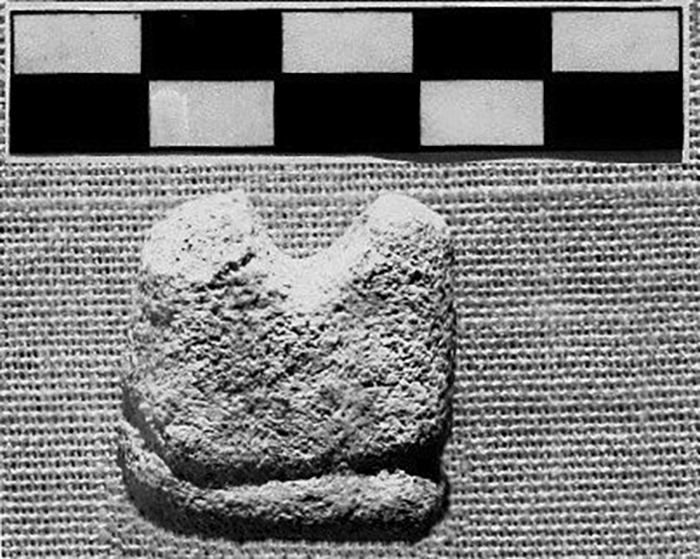Chess has been entertaining and frustrating players for close to 1,500 years, though its origins aren't all that clear. Now one archaeologist thinks he has discovered the oldest chess piece in existence, at around 1,300 years old.
The sandstone object, which has a passing resemblance to a rook, was excavated in 1991 at Humayma (or Humeima) in southern Jordan, once upon a time an important trading post.
Based on a new analysis by archaeologist John Oleson, from the University of Victoria in Canada, the piece could predate existing finds by 100 years or so: he says the object is a closer match to ancient chess pieces than it is to religious artefacts of the time.
 (John Peter Oleson)
(John Peter Oleson)
"Although the shape, rectangular in section with splayed, horn-like projections at the top, resembles a Nabataean altar or betyl, parallels with early Islamic chess pieces are far more convincing," explains Oleson.
The shape of the rock matches up with pieces dated to later in time, carved out of stone, wood or ivory, and discovered in the same region, Oleson says. With the game of chess thought to have been brought westward from India by travelling merchants and diplomats, the location of the finding makes sense, too.
Humayma, the site of the discovery, lies on the Via Nova Traiana, a famous trade route of the time: it could well be that the ancient Roman road played a big part in the game making its way to the Middle East and Europe.
References to chess can be found as far back as the 7th century in Islamic texts, not long before the date that this rook is thought to originate from.
While it doesn't look exactly like the rooks or castles of a modern-day chess set, the game and its pieces have changed substantially over time – early rooks were thought to be designed to look like dual-house chariots, and this piece might be a copy.
However, the case isn't closed yet: more detailed analysis is going to be required to establish that this unassuming block of sandstone can really claim to be the oldest chess piece found to date.
Old chess pieces can attract six-figure sums, like the piece auctioned off earlier this year, which originated from Norway. This too would have taken the place of the modern-day rook – but in this case it was known as a warder.
The warder is thought to date from the late 12th century or early 13th century, so the chess piece, as identified by Oleson, could be almost twice as old.
And while the basics of the game have remained the same for centuries, we've seen a lot of change too – nowadays, computers can give the best human players a very good game.
The findings have been presented at the 2019 annual meeting of the American Schools of Oriental Research.
